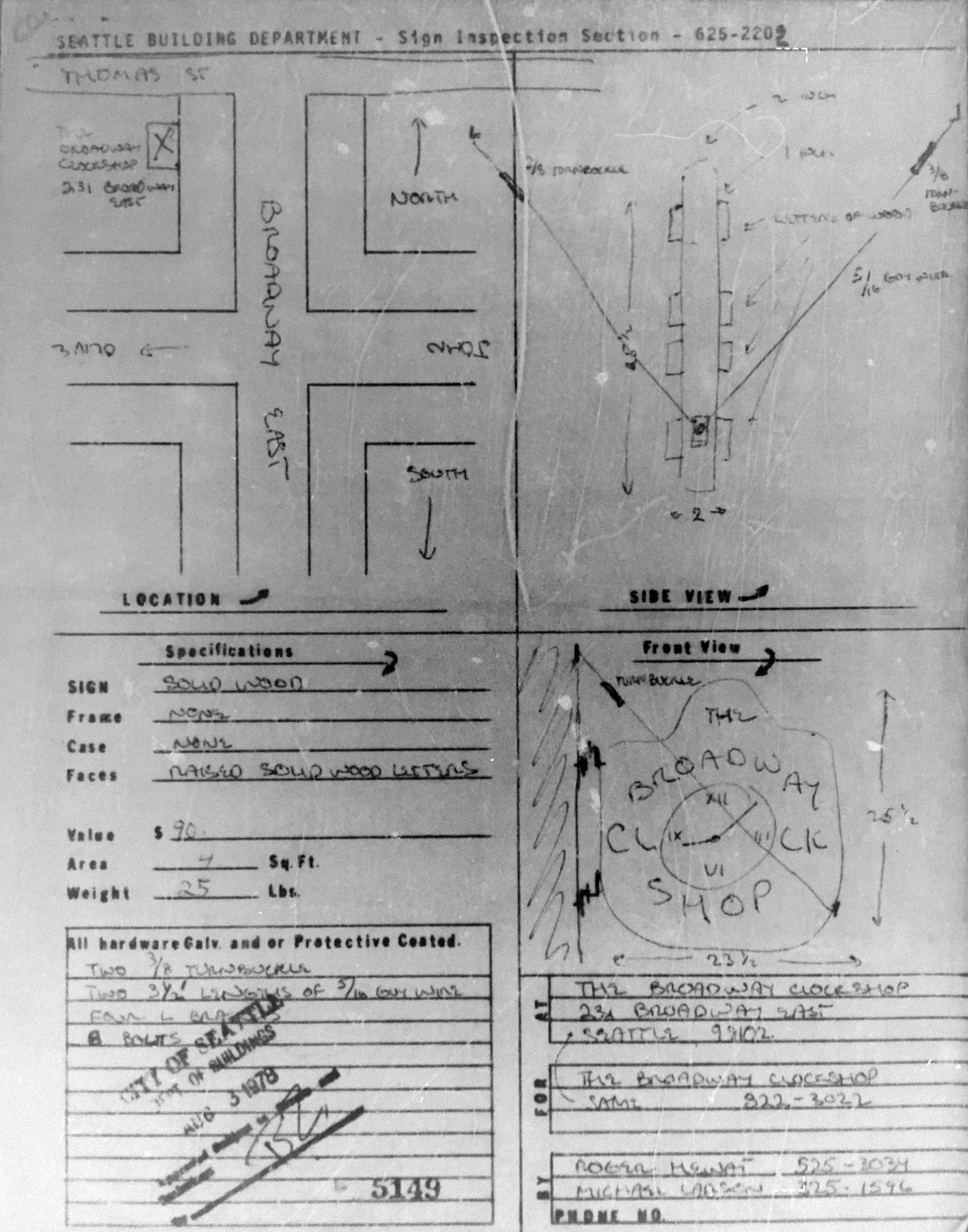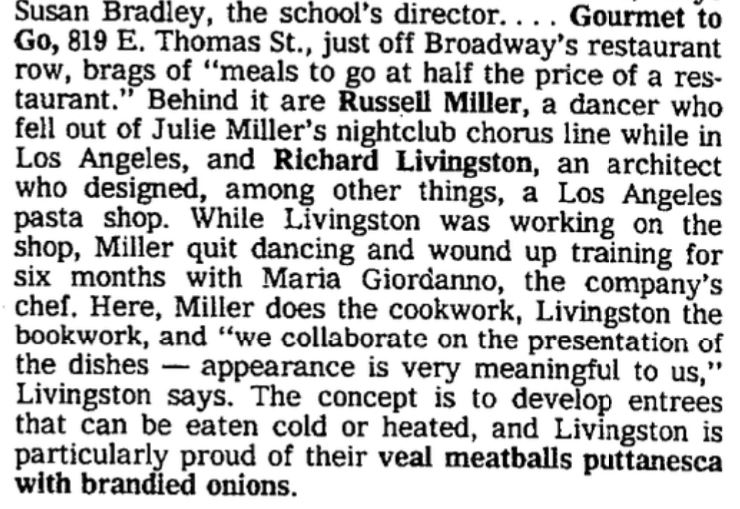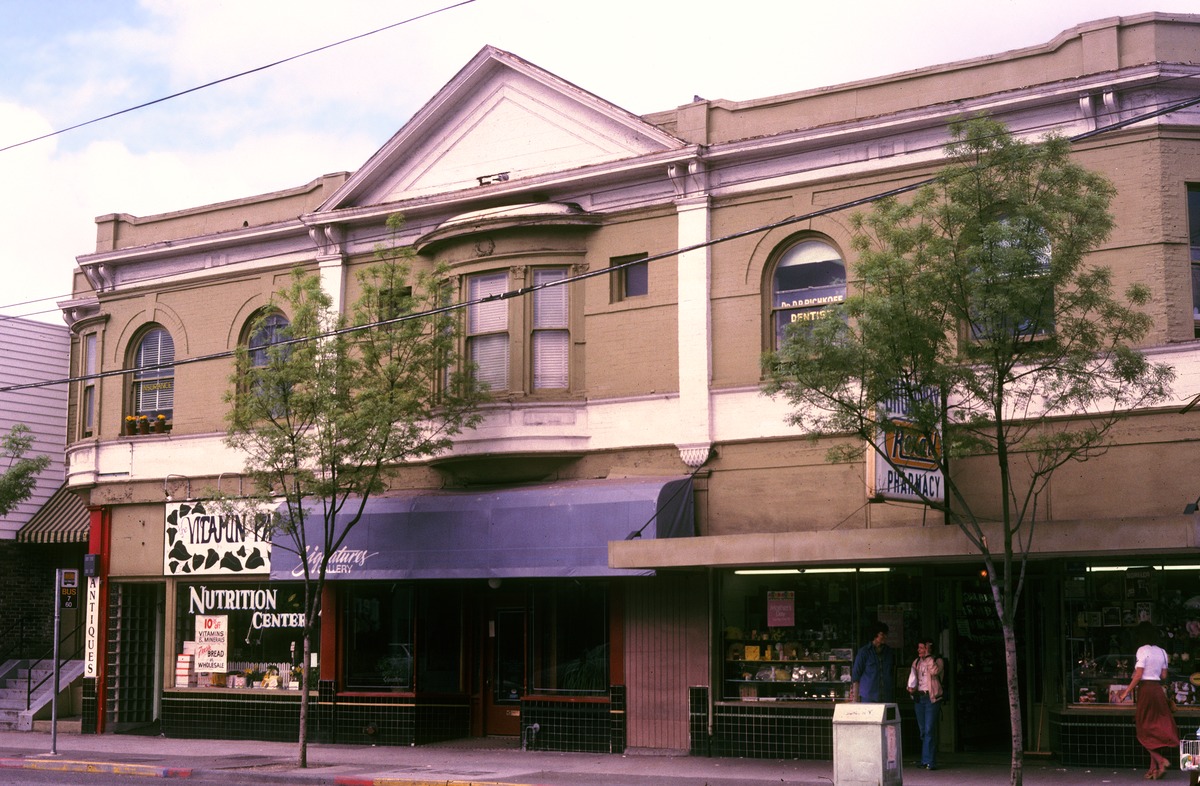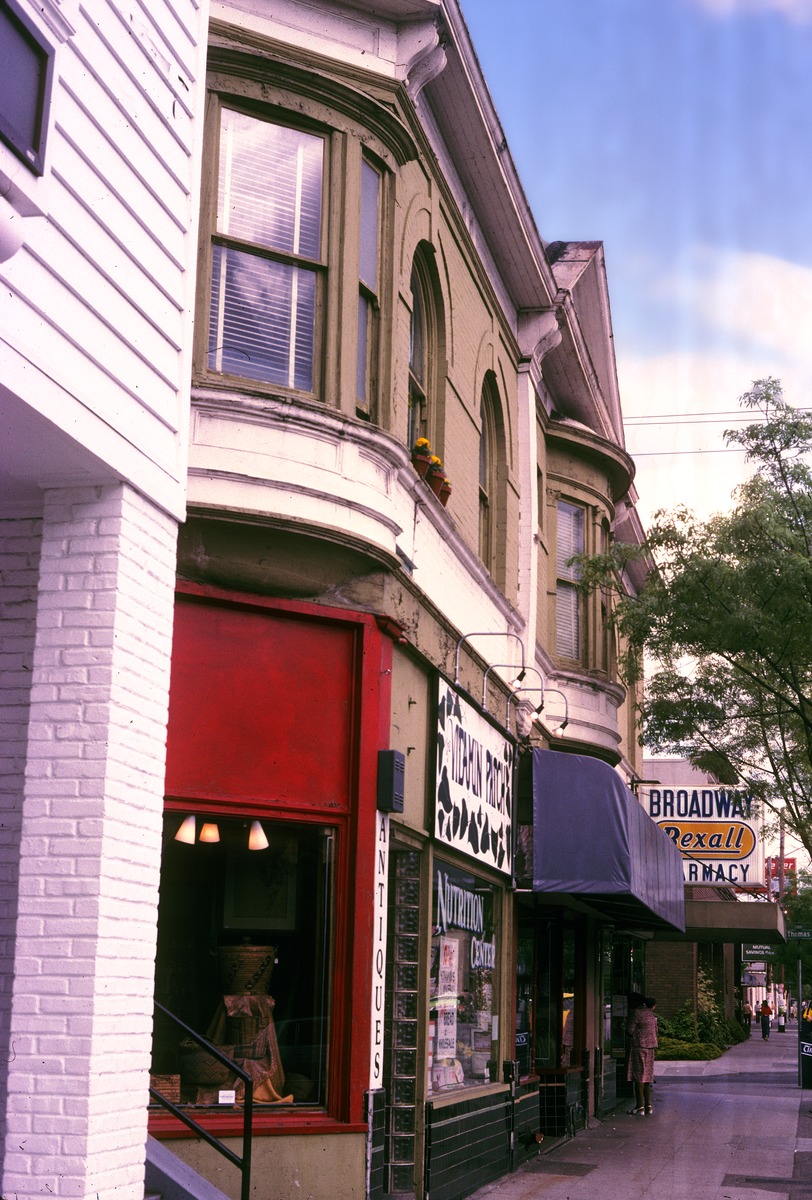229-235 Broadway East was built as the Wilshire Building, and is known today officially as the Lota Building. Until recently it was owned by long-time local attorney Lois Edwards, and named after her.
The Wilshire Building has a 119 year history of service to the neighborhood.
Notes on this article
This article was originally part of a longer one, “The Grocery Revolution Reaches Broadway“. That was published on Capitol Hill Seattle Blog as well as Capitol Hill Historical Society’s blog. I am a co-founder of CHHS, and separately authored a number of articles on Seattle retail grocery history.
When a threat emerged to demolish the Wilshire Building in late 2019 and early 2020, I wanted to make this part easier to find and read, while adding some detail. Unfortunately, the article was shelved due to the pandemic. But now that the owners have reopened the demolition permit I’m dusting it off again.
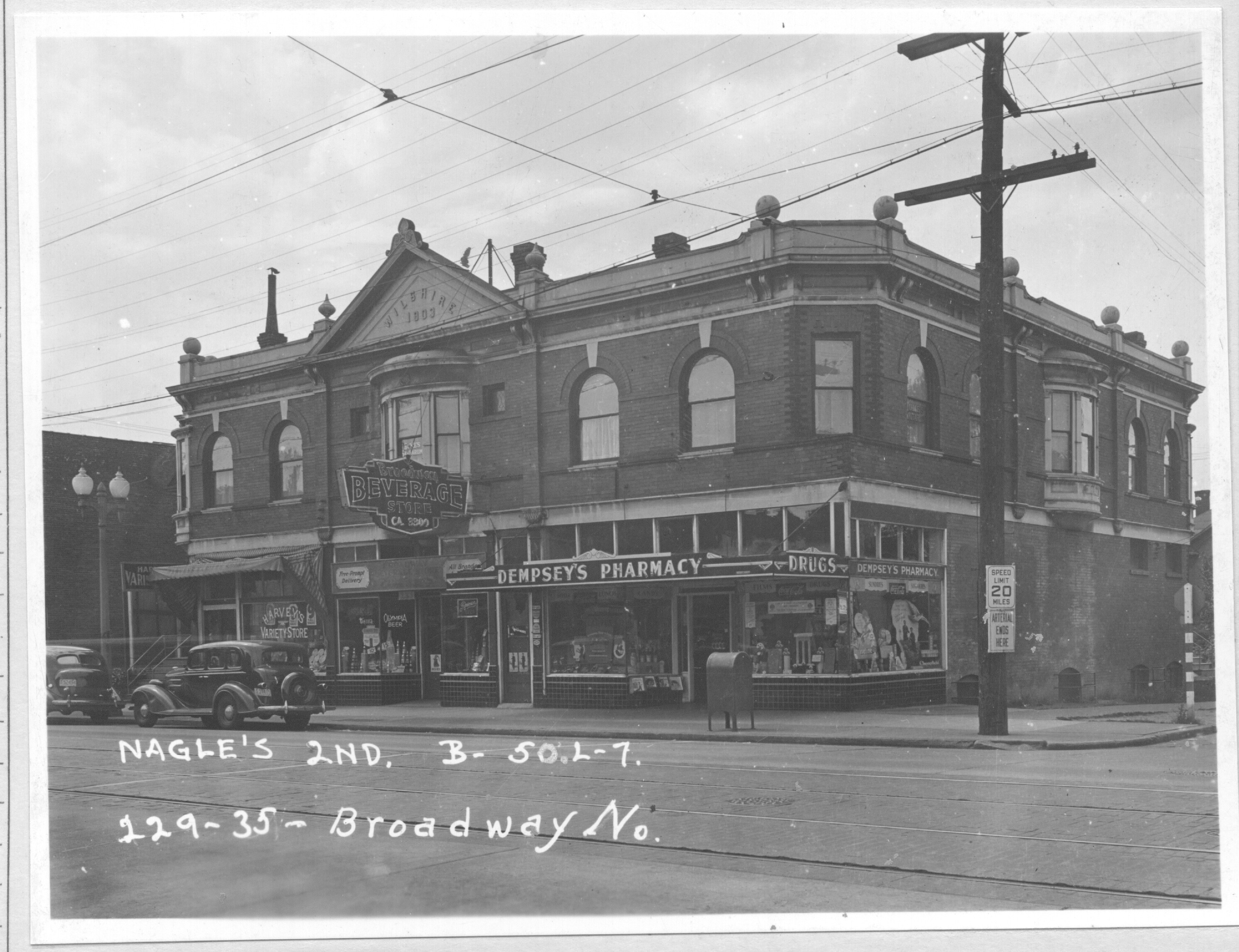
Wilshire Building’s eponym
The Wilshire Building was built in 1903 by Washington State Senator and former King County Prosecutor W. W. Wilshire (William Wallace Eugene Wilshire). His name is on the top of the building, which is a good reason to call it the Wilshire Building.
Back in 1903, the state legislative sessions were short and biannual. That let Wilshire continue his career on the side. Coincidentally, like recent owner Lois Edwards, he was an attorney as well. Wilshire partnered in the law firm Wilshire & Kenaga with A. H. Kenaga.

Who was Wilshire
Wilshire moved to Seattle from Washington, D.C. in the late 1880s with his wife Alice. In D.C., he worked as a land use attorney for the federal government. After renting on Denny Hill, the Wilshires built just off Broadway at 228 Harvard Ave East in 1892, making them early streetcar commuters in the area. This home was demolished for the 1964 apartment building Harvard House.
He became King County Prosecutor while living at 228 Harvard Ave East. Among the many headlining trials he prosecuted, one stood out for his personal touch. The 1895 headline read, “Fists as Arguments — Come Into Play Between Enraged Attorneys”:
“If you say that I have done anything, you are a — liar.”
Dec 12, 1895 Seattle PI
“‘You are a _ .’ [said Wilshire]
“Quick as a flash, Winstock’s fist shot at Wilshire’s face, and Wilshire shot back his fist at Winstock. It was a regular stand-up fight… some were of the opinion that Winstock landed on Wilshire’s face, and others thought Wilshire parried and got in one on Winstock.”
In 1899 Wilshire was elected to the Washington State Senate for the district covering (later) Capitol Hill and Broadway. He proceeded to build a new, larger home for himself and his wife Alice.

Wilshire’s second Broadway district home
In 1900 the Wilshires moved across the street to a new house at 302 Harvard Ave East. This house was demolished for the mid-century apartment building that was recently demolished for Harvard Flats. Their home faced Harvard Place Park and an empty lot across Harvard.
Wilshire was active in community issues and later led the Seattle Chamber of Commerce. Presumably Wilshire developed other buildings in the area.
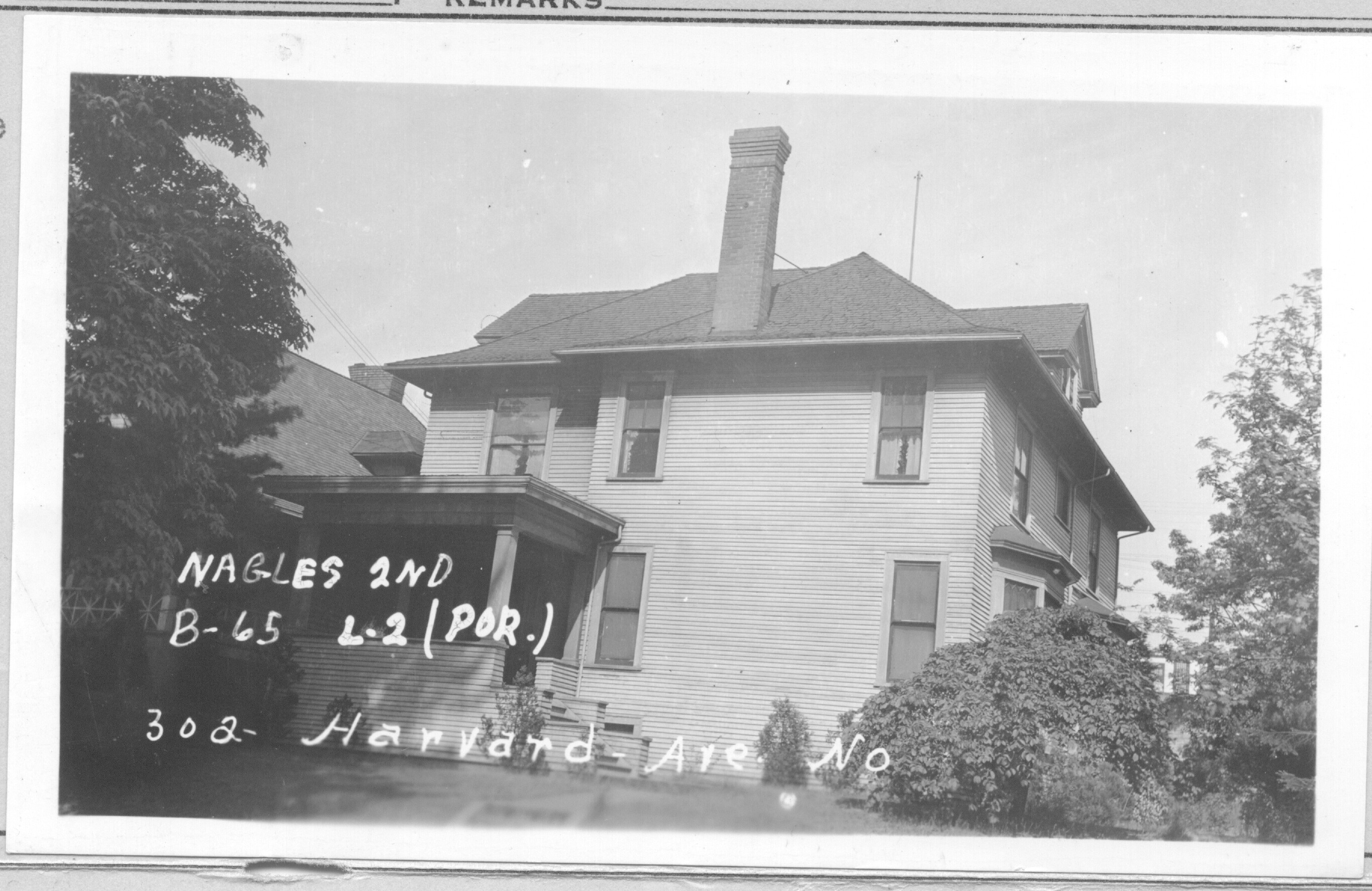
Wilshire Building’s architect
The Wilshire Building was completed in 1903, designed by architect Henry Dozier and constructed by E. D. Davis.
The dossier on Dozier is surprisingly, and mistakenly, thin. The Pacific Coast Architecture Database only lists one building by him. The all-inclusive tome Shaping Seattle Architecture has only a few more buildings along with a textual shrug for biographical information.
Luckily a determined doctor in Denver has been researching Dozier for the last thirty years, and has a 96-page article with built works profiles and biographical information online. Dr. Brantigan has determined that Dozier’s career began in Denver and then went through the gold mining towns of Cripple Creek, Colorado and Skagway, Alaska, before he arrived and worked in Seattle. Perhaps the most recognizable of his buildings today is the H. H. Dearborn house at 1119 Minor Avenue, home to Historic Seattle. Although some have been demolished, a number of houses and at least one other mixed-use building remain.
In Seattle, Dr. Brantigan has identified 24 projects by Dozier. But there are sure to be more unidentified buildings designed by Henry Dozier in Seattle, because the Wilshire Building is not on the list and was unknown to Dr. Brantigan until I contacted him in 2017.
These gaps in architectural history are quite common in Seattle. Digitization of archives created a revolution in how research is done, who can do it, and what we know.
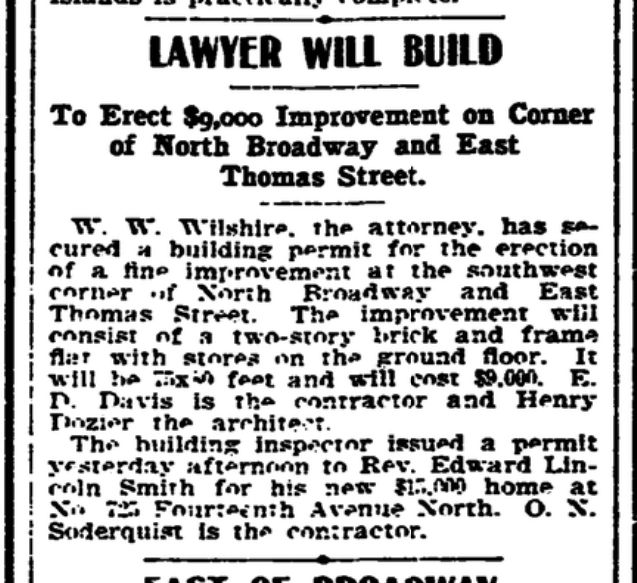
Wilshire Building first tenants
I encountered the Wilshire while writing about the Capitol Hill locations of the 1910s and 1920s chain store Groceteria.
Initial tenants included a maternity home upstairs which women rented by the week as they prepared to give birth. By 1914, and throughout the time of Groceteria in the 231 storefront, the Rex Sanatorium occupied the upstairs rooms.
Per advertisements it was “a modern sanatorium, complete in every detail”. Rex expanded on the maternity home’s services, offering “convalescent, surgical and maternity” care. Rex later moved to the other side of Cal Anderson Park, so by the 1937 photo it was replaced by Hume’s Sanatarium. Leanna M. Hume had been matron of the Rex Sanatorium.
The inconsistent use of “sanatarium” and “sanatorium” is a bit odd, but advertisements make it clear that this was for example not a tuberculosis ward.
The corner store at 235 Broadway East was first occupied by the pharmacy of M. P. Leary. Leary’s shop remained from 1903 for about a decade. Leary was replaced by the second Swift’s Pharmacies store, which remained past Groceteria’s tenancy next door. Swift was replaced briefly by a store for the Jamieson Drugs chain from about 1931-1933, and that was replaced by the Dempsey’s Pharmacy that appears in the 1937 photo.
The southern storefronts held a number of tenants. Prior to Groceteria moving into 233 Broadway East, there was the store of P. MacPherson who sold fabric and clothing.

Wilshire Building groceries
Groceteria’s Broadway location competed directly with two other grocers at the intersection with Thomas Street. Across Broadway was Fleming & Moore, which had 4 stores all on Capitol Hill and had operated as a “cash grocery” since opening in 1911. Read more about Fleming & Moore in Tom Heuser’s article about the Flemington, now Capitol Building Apartments.
Diagonally across the intersection was the Dodds family grocery which had been operating within a couple blocks since 1903. Dodds’ store was in the building currently home to Julia’s. Dodds left the grocery business while competing with Groceteria, each sibling moving on to different careers. After Dodds closed in 1919, they were replaced in the Julia’s building by grocer couple Heijiro and Ishi Hashiguchi who branded their grocery with the auspicious title Broadway Sanitary Public Market.
A helpful Groceteria ad tells us that C. V. Evans was manager of the Groceteria in the Wilshire in 1922. He lived at 1723 Bellevue that year. He had recently relocated to Seattle from Denver where he was already working in the grocery business. In 1924 he worked at two Groceterias, selling fruit at the north Fremont store and meat at the Eastlake store.
Groceteria left the Wilshire Building in late 1922, moving across the street to 212 Broadway East, south of Fleming & Moore. Seattle’s new Piggly Wiggly franchise opened their fourth store at Broadway and Roy in August 1922, and in early 1923 opened another directly across the street from Groceteria next to their old storefront, 231 Broadway East. Piggly Wiggly remained in the Wilshire Building until at least 1929.

Wilshire scholarship
Alice Wilshire died in 1918. William eventually remarried in 1940 at age 81. His new bride, Fannie Belden, was a longtime school teacher at Ravenna and McDonald elementary schools. Until 1948, Seattle Public Schools required all female employees to be unwed. So Fannie retired from her career at age 63 to wed William.
William Wilshire passed away at age 85 in 1944. His grave is next to Alice at Lake View Cemetery.
Fannie remarried a year and a half later to Arthur Shepherd. She then died in 1947 after less than two years of marriage to Arthur.
In Fannie’s will she left most of the estate she inherited from William to established a scholarship to the University of Washington law school in William Wilshire’s memory. Wilshire was a graduate of George Washington University law school in D.C., but Fannie was a UW graduate and kept the scholarship local. The scholarship continues to this day and is one of the oldest UW law school scholarships. It paid for graduate law degrees like that of Douglas Hendel, a local attorney who died in 2016. Another recipient was Paul Van Wanegan, who endowed his own scholarship for the law school in 2010. There must be countless recipients now over the last seventy years.
Wilshire Building future
It would be nice to think that the Wilshire Building, now 119 years old, has a guaranteed role in the community’s future. Without awareness and protection, though, it cannot survive.
Apartment blocks are rising around it, benefiting from close proximity to Capitol Hill Station. In 2018, developers purchased the property from local attorney Lois Edwards, who herself owned it for 35 years.
Just before the pandemic, the owners filed for a demolition permit on the building. After pausing the permit for two years, they filed an application for a 95-unit apartment. The building will meet affordable housing rental restrictions, allowing the developers to skip design review. They’re hoping to skip the historical review process as well.

Addendum: Later history of Wilshire Building
During research for the Groceteria article, I pulled together a number of articles, ads, and permits that I ended up leaving out. Those are all here.
Further reading by Rob Ketcherside
- Grocery Revolution Reaches Broadway original article, with more details on Groceteria (on Capitol Hill Seattle Blog)
- First Broadway Streetcar about how Wilshire got to work (on CHS Blog)
- Julia’s building, past to present (on CHS Blog)
- Harvard Place Park a half-block west (on CHS Blog)
- Cobb’s Jewelry two blocks north (on CHS Blog)
- Broadway Market v1.0 one block north (on CHS Blog)
- State Senator Frank Renick (on CHS Blog)
- Love stories at Broadway and John one block south (on CHS Blog)
